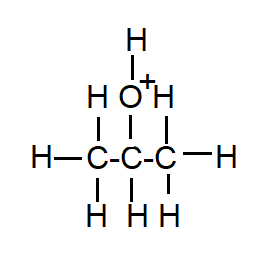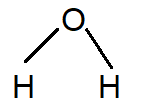
How does isopropyl alcohol differ from water in polarity?
Answer
434.4k+ views
Hint: Isopropyl alcohol is the simplest example of secondary alcohols. Polarity is defined as the dipole moment. It occurs with a negatively charged end and a positively charged end. Polar molecules must have polar bonds in the structure which make them polar.
Complete step by step answer:
In order to determine the polarity of isopropyl alcohol we have to consider its structure. In the structure of isopropyl alcohol, one of the hydrogen atoms is replaced by a hydrocarbon group. Generally, hydrocarbons are nonpolar in nature due to the low polarity of the hydrocarbon group causing low polarity in the isopropyl alcohol and make it less polar.

But in the case of water, the structure of water has two hydrogen atoms attached to one oxygen atom. In the molecule of water the bonds are attached in such a way that the dipoles of oxygen-hydrogen bonds add constructively. Due to the difference in electronegativity of oxygen and hydrogen this molecule is much more polar.

That’s why isopropyl alcohol is less polar than water.
Additional information:
In a molecule there is one or more chemical bonds present between molecular orbitals of different atoms. Polarity of molecules depends on the electronegativity difference between the bonds as explained above. Polarity also occurs due to an asymmetric arrangement of nonpolar covalent bonds and non-bonding pairs of electrons known as a full molecular orbital.
Note: In more simple words, polarity is also called separation of charge because electrons consist of negative charge and the unequal sharing of electrons in a bond causes the formation of electric dipole that is a separation of positive and negative electric charge.
Complete step by step answer:
In order to determine the polarity of isopropyl alcohol we have to consider its structure. In the structure of isopropyl alcohol, one of the hydrogen atoms is replaced by a hydrocarbon group. Generally, hydrocarbons are nonpolar in nature due to the low polarity of the hydrocarbon group causing low polarity in the isopropyl alcohol and make it less polar.

But in the case of water, the structure of water has two hydrogen atoms attached to one oxygen atom. In the molecule of water the bonds are attached in such a way that the dipoles of oxygen-hydrogen bonds add constructively. Due to the difference in electronegativity of oxygen and hydrogen this molecule is much more polar.

That’s why isopropyl alcohol is less polar than water.
Additional information:
In a molecule there is one or more chemical bonds present between molecular orbitals of different atoms. Polarity of molecules depends on the electronegativity difference between the bonds as explained above. Polarity also occurs due to an asymmetric arrangement of nonpolar covalent bonds and non-bonding pairs of electrons known as a full molecular orbital.
Note: In more simple words, polarity is also called separation of charge because electrons consist of negative charge and the unequal sharing of electrons in a bond causes the formation of electric dipole that is a separation of positive and negative electric charge.
Recently Updated Pages
The correct geometry and hybridization for XeF4 are class 11 chemistry CBSE

Water softening by Clarks process uses ACalcium bicarbonate class 11 chemistry CBSE

With reference to graphite and diamond which of the class 11 chemistry CBSE

A certain household has consumed 250 units of energy class 11 physics CBSE

The lightest metal known is A beryllium B lithium C class 11 chemistry CBSE

What is the formula mass of the iodine molecule class 11 chemistry CBSE

Trending doubts
The reservoir of dam is called Govind Sagar A Jayakwadi class 11 social science CBSE

10 examples of friction in our daily life

What problem did Carter face when he reached the mummy class 11 english CBSE

Difference Between Prokaryotic Cells and Eukaryotic Cells

State and prove Bernoullis theorem class 11 physics CBSE

Proton was discovered by A Thomson B Rutherford C Chadwick class 11 chemistry CBSE




